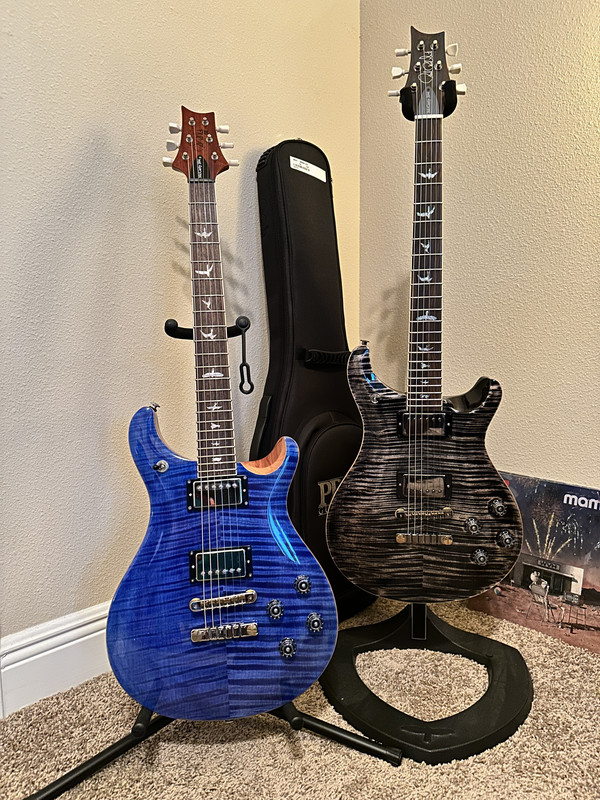show_a_little_faith
There's nothing like life
- Joined
- Feb 10, 2022
- Messages
- 610
I gotta say I'm on the opposite side of most when it comes to veneers. There's definitely a range, with some looking much nicer than others but if you're able to see it in person or high-quality photos, you can find some spectacular looking veneer guitars. And they still have the full thickness maple cap, it's just got the fancier veneer over it.
I believe Eric Johnson once said he could hear the difference between a Duracell and Energizer battery in his pedals, but I've never heard someone say they heard a difference between a Flame, Quilt or "plain/veneered" maple cap
There's plenty of debate over other aspects of SE vs S2 vs Core (craftsmanship, electronics, etc.) that should factor into buying decisions, but I feel like Veneers offer (usually) a much better looking top than you'd get anywhere near that price point elsewhere. Unless you're planning to refinish it, what difference does the thickness of the very top layer make?
But hey, that's just my opinion, YMMV...
I believe Eric Johnson once said he could hear the difference between a Duracell and Energizer battery in his pedals, but I've never heard someone say they heard a difference between a Flame, Quilt or "plain/veneered" maple cap
There's plenty of debate over other aspects of SE vs S2 vs Core (craftsmanship, electronics, etc.) that should factor into buying decisions, but I feel like Veneers offer (usually) a much better looking top than you'd get anywhere near that price point elsewhere. Unless you're planning to refinish it, what difference does the thickness of the very top layer make?
But hey, that's just my opinion, YMMV...


